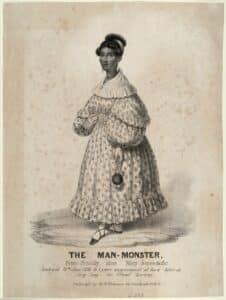New Video Exhibit: Voices of Lunáapeew/Lenape
July 2, 2025
Prospect Park Alliance and the Éenda-Lŭnaapeewáhkiing Collective (EL Collective), which brings together Lunáapeew/Lenape communities who have been displaced across Turtle Island (North America), present Eelunaapéewi Ehaptoonáakanal: Voices of Lunáapeew/Lenape, an exhibit on view at Lefferts Historic House in Prospect Park celebrating 400 years of Indigenous resilience. Featuring video interviews with Lunáapeew/Lenape knowledge-keepers and culture bearers about their relationships to their ancestral homelands.
Join an opening celebration on Saturday, July 12, from 2–5 pm.
Free, RSVP: prospectpark.org/voices-of-lenape.
The exhibition is part of the Alliance’s ReImagine Lefferts initiative, which is transforming the museum to explore the lives, resistance and resilience of the Indigenous people of Lenapehoking, whose unceded ancestral lands the park and house rests upon, and Africans who were enslaved by the Lefferts family.
In addition to the exhibit, the Alliance, EL Collective and the American-Indian Community House will be hosting the Second United Lenape/Lunáapeew Nations Pow Wow at the LeFrak Center at Lakeside in Prospect Park on September 13 and 14, 2025. Pow Wows are gatherings where Lenape/Lunáapeew and neighboring Indigenous nations socialize and celebrate life. Prospect Park hosted formal Pow Wows from 1916 to 1972. In 2018, the Park Avenue Armory hosted the First United Lenape/Lunáapeew Nations Pow Wow. Reviving this tradition in the park will offer all Lenape/Lunáapeew an opportunity to celebrate their culture in their homelands and offer Brooklynites of all backgrounds the chance to enjoy the drumming, dancing, singing, art, crafts and foods of the original stewards of this land. In 2024, Prospect Park Alliance held a culture fair with the American Indian House and EL Collective as a precursor to the Pow Wow.
Lunáapeew/Lenape means human beings or, more specifically, “the ones who came from thought,” and is the name of the indigenous peoples whose ancestral homelands encompassed what is today Brooklyn and the surrounding region. Éenda-Lŭnaapeewáhkiing, “the land of the Lunáapeew,” holds the stories of a civilization rich with a deep understanding of the delicate balance and mutual relationships necessary to nurture and sustain a healthy world.
“We are a nation who has been scattered to the winds because of the greed of not just the Dutch, but also the English after that and so forth, who chased us and massacred us for our land,” said George Stonefish, co-founder, Éenda-Lŭnaapeewáhkiing Collective, and ReImagine Lefferts advisor. “I want people to understand who the Lenape were and are, and the things we’ve given to modern culture that aren’t acknowledged.”
This video installation features Lunáapeew/Lenape knowledge-keepers and culture bearers who are members of the EL Collective. Interviewees discuss their histories, experiences and feelings about their homelands. They also celebrate the resilience of their communities, which remain committed to stewarding their cultures and their homelands despite 400 years of violent displacement and colonization.
“We are honored to join our partners at the Éenda-Lŭnaapeewáhkiing Collective to share with our community the history, resistance and resilience of the Indigenous people of Lenapehoking, as well as the enduring art, culture and stories of the Lenapehoking today,” said Morgan Monaco, Prospect Park Alliance President. “This exhibit and our upcoming Pow Wow are an important step in healing deep-seated wounds from our nation’s past and ensuring that all in our community see themselves represented, welcomed and celebrated here in Prospect Park.”
“New Yorkers are deeply interested in the original people of this land,” said Dylan Yeats Ph.D., Prospect Park Alliance Director of Museum Programs and Operations. “This free and accessible exhibit offers audiences a chance to hear directly from the Lunáapeew or Lenape themselves about their histories, cultures, experiences and opinions.”
This exhibition complements the other core ReImagine Lefferts history and art exhibits including Ancestral Whispers, a site-specific work by Adama Delphine Fawundu on the house’s Flatbush Avenue porch which honors the heroism and lives of the Africans enslaved by the Lefferts family, and also interpretive profiles of the 25 enslaved Africans discovered to date through original research and scholarship.
About Éenda-Lŭnaapeewáhkiing Collective
The Éenda-Lŭnaapeewáhkiing Collective is establishing a partnership with all Delaware/ Munsee-Delaware/Lenni-Lenape/Lenape/Lunáapeew (Lunáapeew) communities in various projects that involve the Lunáapeew Nation that have been displaced across Turtle Island (North America). The Lunáapeew are the original inhabitants of Manahahtaanung, “At the place we’re gathering wood to make bows,” what is now an area that includes the five boroughs of New York City, large portions of the states of New York, southern Connecticut, New Jersey, Pennsylvania and Delaware. It is our hope these projects will allow us to unite in a way that allows for sharing of knowledge and an understanding of each community’s unique history of displacement. Learn more at lunaapeewahkiing.com.
Photo Caption (l to r): Chief Urie Ridgeway, Leadership, Nanticoke Lenni-Lenape Tribal Nation; Cory Ridgeway, Director, EL Collective; Brent Stonefish, Co-Founder, EL Collective; George Stonefish, Co-Founder, EL Collective.




